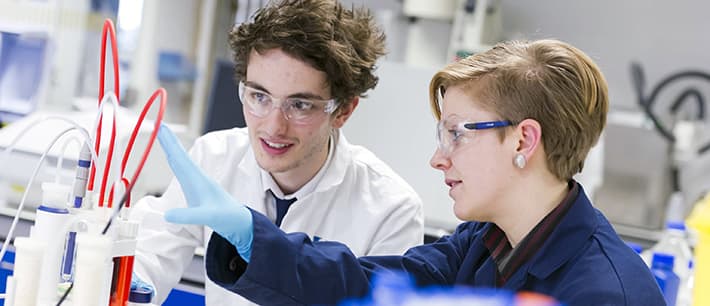UEA Research Could Help Create Logic Gates For DNA-Based Computing
A team of researchers from University of East Anglia UEA, led by Dr. Zoë Waller from the School of Pharmacy has shown that computers being built from DNA instead of silicon could become possible. DNA-based computing is a wide research field that uses molecular biology hardware & biochemistry instead of silicon material to build a different computers. The latest research work from UEA scientists shows that the structure of DNA aka - our genetic material can be modified in a way that could lead to pathbreaking applications in the field of nanotechnology & DNA computing. In a research paper titled ‘Reversible DNA i-motif to hairpin switching induced by copper (ii) cations’ published in Chemical Communications journal, it has come to light that UEA researchers have become successful in switching the DNA structure using copper salts and an agent called EDTA (Ethylene-diamine-tetra-acetic acid) traditionally found in personal care products such as shampoo.

From what scientists knew till date, DNA structure could only be changed using acid, which would cause it to fold up into an i-motif - the four-stranded DNA secondary structures which can form in cytosine-rich sequences.
With the UEA research work, it has been proven that positively-charged copper (or copper cat ions) can be used to switch the DNA structure a hair-pin like form and reversed into original structure using EDTA. This is where it gets interesting. Though a single switch was possible with earlier methods, only now are the scientists able to change the structure twice.
There are numerous applications of this technology. Firstly, these findings could be used to create logic gates (AND, OR, NOT etc.) the basic building blocks of digital circuits that are used to build all out electronic equipments, to be now used in building DNA based computers. As of now, they could only be created using silicon-made diodes or transistors which acted as electronic switches. Secondly, they can be used to detect the presence of copper cations in water. By removing these elements from water, we safeguard the fish & other aquatic organisms from their highly toxic nature. Thirdly, to build really tiny computers aka nanotechnology to be fitted in the wearable gadgets of the future.
What are your thoughts about DNA based computing? Share with us in comments below.
Source: #-Link-Snipped-#

With the UEA research work, it has been proven that positively-charged copper (or copper cat ions) can be used to switch the DNA structure a hair-pin like form and reversed into original structure using EDTA. This is where it gets interesting. Though a single switch was possible with earlier methods, only now are the scientists able to change the structure twice.
There are numerous applications of this technology. Firstly, these findings could be used to create logic gates (AND, OR, NOT etc.) the basic building blocks of digital circuits that are used to build all out electronic equipments, to be now used in building DNA based computers. As of now, they could only be created using silicon-made diodes or transistors which acted as electronic switches. Secondly, they can be used to detect the presence of copper cations in water. By removing these elements from water, we safeguard the fish & other aquatic organisms from their highly toxic nature. Thirdly, to build really tiny computers aka nanotechnology to be fitted in the wearable gadgets of the future.
What are your thoughts about DNA based computing? Share with us in comments below.
Source: #-Link-Snipped-#
Replies
You are reading an archived discussion.
Related Posts
any idea abt this????
i personally do favour of windows 7,because after introducing of windows 8 all things becomes messy its ok for mobile version but not for lappy and pc,although they removed the...
Hello CEans!
Myself I am Arunkumar, Currently working as a Sr. Quality engineer in FTD India Pvt. Ltd since 5 years. I have completed my graduation from Computer Science Engineering...
What is the exact definition of Definition of Wetted Wall Column in Mass transfer.
Can anyone tell the uses of this equipment in lab ?
I am Ankush Sharma, working in IT filed. I joined this website by the domain name.
Domain name appears the freshness, madness in invention and creativity.
Getting knowledge from different-...
